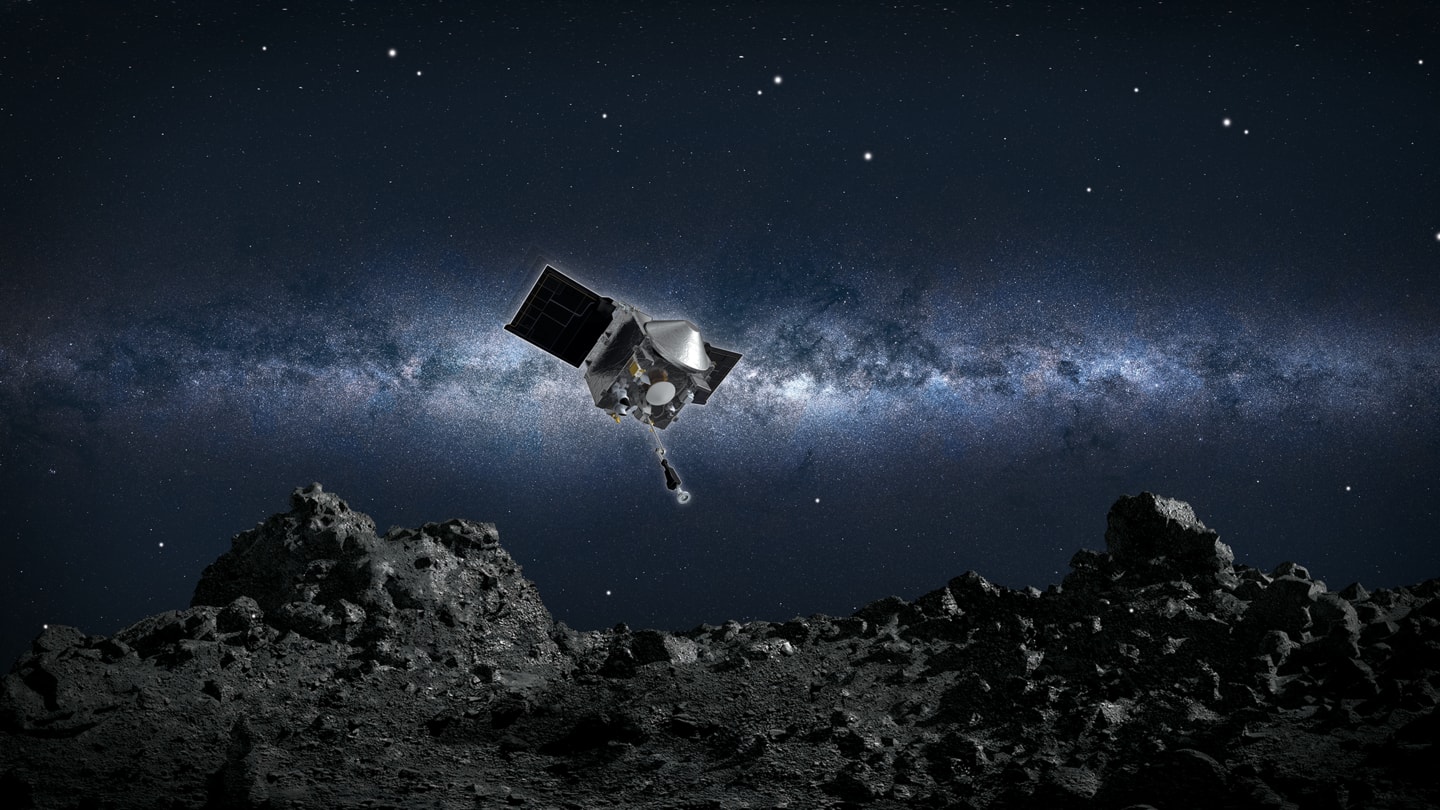
NASA spacecraft now homeward bound after collecting Bennu asteroid samples
What's the story
NASA has recently announced that its OSIRIS-REx spacecraft has begun a 2.5-year journey back to Earth after reportedly collecting samples from an asteroid called Bennu. Scientists said that since asteroids are debris from the solar system's formation around 4.5 billion years ago, they could contain clues to the origins of life on Earth. Here are more details about OSIRIS-REx's mission.
Hard at work
Mission involves collecting asteroid samples, sending them home
OSIRIS-REx stands for Origins, Spectral Interpretation, Resource Identification, Security, Regolith Explorer. The spacecraft embarked on its mission five years ago. It reached the Bennu near-Earth asteroid in 2018. The acorn-shaped, skyscraper-sized asteroid is located around 200 million miles away from our planet. The spacecraft's mission is to survey the asteroid's surface, collect rock and dust samples, and send them back home in a capsule.
Details
Samples are estimated to land in Utah in September 2023
On May 10, OSIRIS-REx fired its main engines at maximum thrust for seven minutes, sending it away from the 4.5 billion-year-old asteroid, hurtling homewards at around 600 miles per hour. The capsule containing asteroid samples will reportedly be recovered from Utah's West Desert on September 24, 2023, after OSIRIS-REx jettisons it flying past Earth. This would mark the completion of its primary mission.
Calculated moves
NASA is navigating OSIRIS-REx using just radio waves
If the 2023 capsule recovery attempt fails, NASA will make another attempt in 2025. The space agency explained that it is navigating OSIRIS-REx using radio signals relayed to it by its Deep Space Network of radio antennas. NASA is measuring the frequency of the radio waves returned by the spacecraft transponder to tell how fast OSIRIS-REx is traveling; just like sonar, but in space.
More space junk?
NASA doesn't say what will happen to the spacecraft
NASA's confusingly written press release doesn't mention OSIRIS-REx's fate after the capsule drop. However, IEEE Spectrum reports that the spacecraft itself will never land on Earth. The agency will reportedly distribute the samples to research laboratories around the world but it will preserve 75 percent of the samples at Johnson Space Center for future generations to study using technology that hasn't yet been created.
Twitter Post
This video paints clearer picture, still doesn't explain spacecraft's fate
Mission navigation has received confirmation of burn cutoff. #OSIRISREx is headed home with a souvenir of rocks and dusts from a 4.5-billion-year-old asteroid! #ToBennuAndBack pic.twitter.com/BmaK1dkPDB
— NASA Solar System (@NASASolarSystem) May 10, 2021